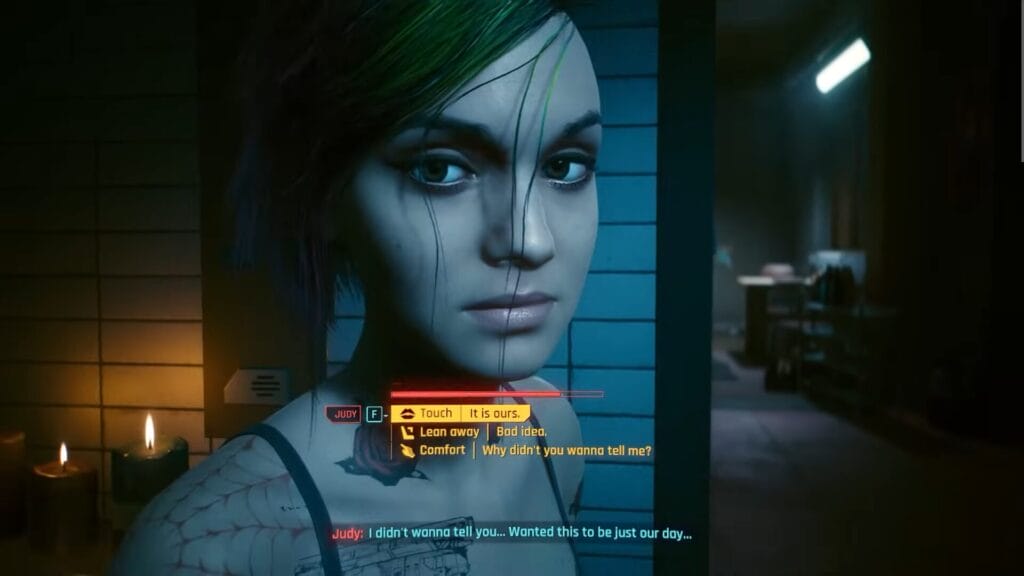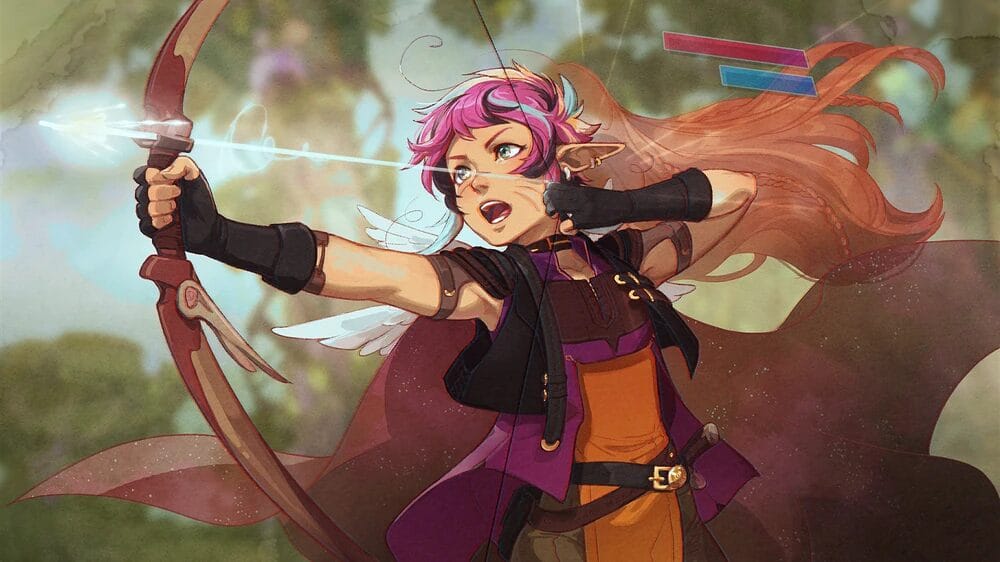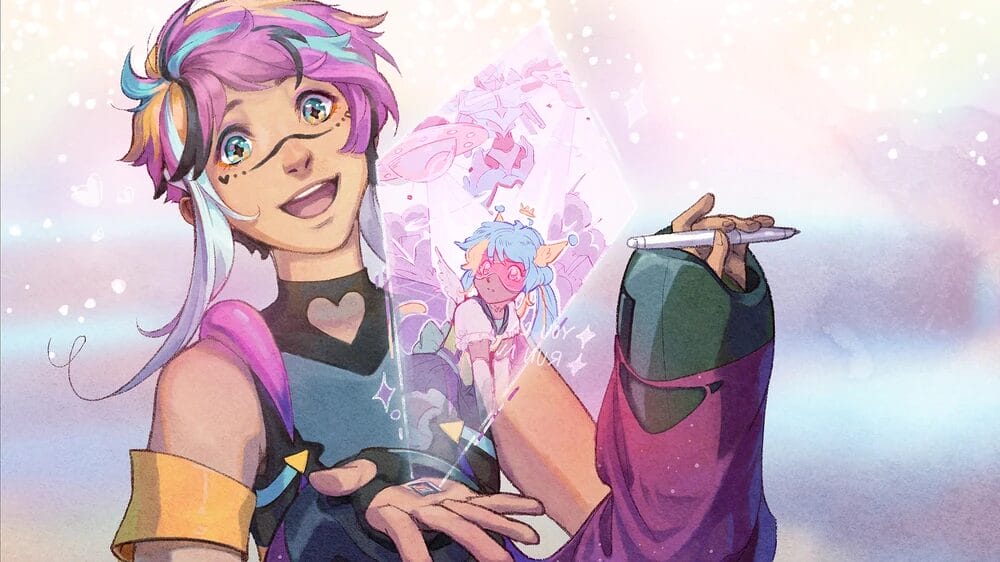Role-playing video games (RPGs) have long been popular with people who want to craft their own stories. Not only do RPGs allow players to customize their playstyle, but each decision comes with the expectation that the player’s choices will influence the main narrative, the player character’s reputation, or even who lives and who dies. Unsurprisingly, a prominent feature in many RPGs is the inclusion of romance, where players can establish romantic relationships with characters that evolve and grow based on in-game choices and dialogue. These romances, however, often come with an assumption that physical intimacy is an essential part of every relationship.

For players who are asexual and don’t wish to be forced into a sexual relationship while pursuing a romance, RPGs still have a long way to go. Cyberpunk 2077, a sci-fi RPG released in 2020, is just one of many examples of this phenomenon. Despite giving players autonomy over how their character navigates the game’s story, the four main romances are less flexible. In order to successfully romance a character, players must select the correct dialogue options for the character of interest and complete related side quests, eventually resulting in a sex scene that acts as confirmation that the two characters are now in a relationship.
Games that offer romance options without sexual intimacy do exist, but they are often a reflection of the limited focus placed on romance by the development team rather than an intentional choice to represent asexuality. The Elder Scrolls V: Skyrim, for example, allows players to marry other characters in the game by equipping a specific amulet. However, this feature feels like an afterthought, as the romantic relationships are purely transactional and lack unique dialogue or character development. This impersonal, one-size-fits-all approach to romance is not meant to meaningfully explore different romantic experiences, and its lack of sexual content is a mere byproduct of the game’s simplistic relationship mechanics. In these games, the romance storylines don’t usually offer the same depth as the games which inevitably link romance and sex together.
There are some games that offer more gratifying romances without a sexual component, but they too stop short of deliberate asexual representation. Josephine, a romanceable character in Dragon Age: Inquisition, is one example. In contrast to the majority of the game’s other romances, her specific relationship arc does not show anything further than a kiss between her and the player character. Due to this noticeable absence of on-screen sexual content, some players have interpreted her as being asexual. This interpretation has never been confirmed by the developers, and it remains ambiguous whether the relationship is canonically non-sexual or if the game simply chooses not to show those elements.
Today I learned that Dragon Age Inquisition has an asexual romance option, as in there is no sex scene. I can’t express how happy that makes me. I hope we get more options like this in the future.
— Malisity (@MalisityGames) May 21, 2022
Josephine may be a charming option for players seeking a romance that focuses on emotional rather than physical intimacy, but the lack of sexual content in her storyline is not made evident until her romance is completed. Players who avoid in-game romances entirely in order to steer clear of sexual content may never realize that Josephine’s romance arc is depicted as non-sexual. And even for players who did pursue her romance, the omission of sexual content may not satisfy those seeking a more explicit acknowledgment of asexuality. After all, asexuality doesn’t always imply a lack of sex, as some asexual people still engage in sexual relationships despite feeling no or limited sexual attraction. Rather, being asexual informs how someone may approach relationships or relate to those around them, especially in societies with a narrow view of what relationships look like.
To truly represent asexuality in video games, it must be integrated with intention rather than through rudimentary romance gameplay or by coincidence. Asexual relationships have a unique dynamic, and one way to acknowledge this reality would be through explicit conversations about boundaries. Those who played The Outer Worlds, a space-faring RPG released in 2019, likely remember Parvati Holcomb, a mechanic that players can recruit to work on their spaceship. Though not a player-romanceable character, Parvati opens up over the course of her travels about how being asexual and not wanting physical intimacy caused her past partners to assume she was cold or unfeeling. In reality, Parvati is anything but that, and much of her personal story is centered around her love for another woman but feeling anxious about how her asexuality may be received. The game’s realistic and touching portrayal about something so rarely explored landed it a GLAAD Media Award and also strong support from asexual players who had never seen themselves represented authentically in a video game before.
Creating a character that the player can romance, however, poses a different challenge to telling a story about an asexual character on their own journey to love. This is where the GLAAD Media Award-nominated game I Was a Teenage Exocolonist excels. Nomi-Nomi is one of its many characters that can be romanced, and early on in the game, Nomi-Nomi discloses to the player that they are demisexual. Demisexual is a term under the asexual umbrella that describes someone who may develop sexual attraction for another person, but only after forming a deep emotional connection with them. Nomi-Nomi expresses wanting to be in a relationship but not necessarily knowing if they would want anything physical other than kissing. The player is also given the option to be asexual, which unlocks special dialogue with Nomi-Nomi where they bond over feeling different from their peers when it comes to their view on relationships.
@finjicoWriter Lindsay Ishihiro on creating LGBTQIA+ characters in I Was a Teenage Exocolonist. 🚀 Available on Nintendo Switch, PlayStation, & Steam!♬ original sound – Finji – FinjiCo
The game acknowledges that Nomi-Nomi’s demisexuality is an important aspect of their character when it comes to romance, as it is important for them to establish boundaries so their potential romantic partner understands what they do and do not feel comfortable with. As a result, their romance storyline focuses primarily on their love of nerd culture, art, and affection. I Was a Teenage Exocolonist makes Nomi-Nomi’s relationship arc romantic without ever needing to be sexual. Even if the player does not choose to romance Nomi-Nomi, the player can encourage them to instead admit their feelings to Rex, their childhood friend who is not asexual, but still fully respects and supports Nomi-Nomi’s boundaries. Above all, Nomi-Nomi is never treated as unworthy of romance because of their demisexuality.
The prevalence of sexual content in RPGs is unsurprising due to its marketing appeal, with titles like Baldur’s Gate 3 (a GLAAD Media Award recipient) gaining notoriety by using its over-the-top sex scenes as a means of garnering interest and publicity. Baldur’s Gate 3 earned critical acclaim due to its compelling world, likeable characters, and player-driven philosophy, but its steamy romances are still one of the game’s most talked-about features. Sex sells, and video games are no exception, though this type of content sometimes comes at the expense of asexual players.

It is important to note that I Was a Teenage Exocolonist has sexual content in the storylines for other characters. The game is, after all, about the messiness of becoming an adult while navigating foreign feelings in a foreign world. Physical intimacy does play a part if the player chooses to engage in such content. But rather than focusing on sex as an incentive for choosing the correct relationship-building dialogue, it instead rewards players with beautifully drawn art pieces of important moments between the player and the character they are spending time with. By making every possible bonding moment an exciting opportunity for new art – and sometimes a new music theme that accompanies it – each relationship is interesting in its own way regardless of whether it leads to a sexual moment. As a result, Nomi-Nomi’s romance feels just as rewarding as the next, setting an example for how to write an intentionally asexual relationship without it feeling disappointing or unfulfilling.
The inclusion of asexual romance – or an explicit option for the player to be asexual – offers an opportunity in game development that will ultimately benefit all players. By including a romance where sexual content is not the end goal, it creates new avenues to make the romances more unique and gratifying. And while casual hook-ups are a staple in the RPG genre and should persist for those who want to create characters less interested in long-term romantic commitments, there is a deficit in long-term romantic commitments without the sexual aspects. The appeal of RPGs lies in their promise of choice, and that encompasses the ability to shape not only your story but also your identity, relationships, and experiences. Yet, when romances overwhelmingly prioritize sexual intimacy as a means of progressing an in-game relationship, it is a reflection of how rigidly intertwined society believes sex and romance to be and subsequently leaves asexual players feeling left out. For a genre built on player freedom, it’s time that more RPGs upheld that ideal.
To learn more about asexuality and the identities under the asexual umbrella please visit:
The Asexual Visibility & Education Network
The Ace and Aro Advocacy Project
Asexual Outreach













